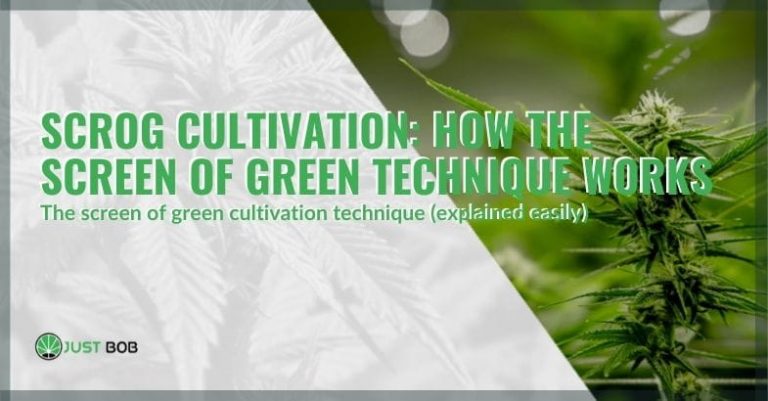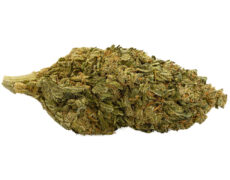Modified on: 15/04/2024
MAXIMIZE YOUR YIELD: THE ULTIMATE GUIDE TO USING SCREEN OF GREEN IN CANNABIS CULTIVATION
As a cannabis cultivator, have you ever wondered if there’s a way to maximize your yield without needing to increase your grow space? Enter the Screen of Green (SCROG) technique, a game-changing method that promotes horizontal growth to optimize light exposure and boost your yield. In this journey, we’ll delve into the nuts and bolts of the SCROG technique, from setting the stage for success to navigating the vegetative and flowering stages, all the way to maintaining your SCROG garden.
-
 SMALL & BIG
SMALL & BIGBUBBLEGUM
Indoor | CBD – CBDA<22%
Starting from:EASTER SALE -10%
1,25CHF1,10CHF/gGrams3 5 10 20 50 100 -


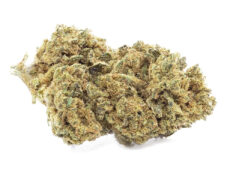
DO SI DOS
Starting from: 2,00CHF/gIndoor | CBD – CBDA < 19%
Grams3 5 10 20 50 100 -


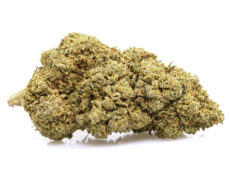
ROYAL GG#4
Starting from: 2,30CHF/gIndoor | CBD – CBDA < 40%
Grams3 5 10 20 50 100 -


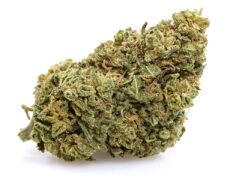
GORILLA GLUE
Starting from: 2,90CHF/gIndoor | CBD – CBDA < 20%
Grams3 5 10 20 50 100
Understanding the Screen of Green (SCROG) Technique for cannabis plants
A staple in cannabis cultivation, the SCROG technique encourages horizontal growth by using a screen. This strategy promotes an even canopy for optimal light exposure, leading to higher yields, irrespective of the number of plants grown. It operates by utilizing a screen positioned above the growing medium to direct and bolster plant branches horizontally, resulting in a uniform and regulated spread with consistent lighting for all growing areas, making it an effective method for growing cannabis, or derivates products like cbd hash.
As the plant grows into the SCROG net, branches begin to be woven through it. In the case of stretching branches, you gently tuck them back under and move to an adjacent square to maintain an even canopy. The result? A well-crafted SCROG canopy that maximizes light exposure to all parts of the plant, including bud sites, creating a thick, even carpet of buds in the optimal ‘sweet spot’ for light, leading to increased yields.
This method is versatile, accommodating both amateur home growers and professional cultivators. With the right seeds and optimal conditions, a skilled grower can anticipate a yield of 500-600g/m2, and potentially greater yields with advanced lights and optimized rooms.
Read also: What is the meaning of the word ‘ganja’?
Setting the Stage for SCROG Success
Like any cultivation technique, laying the groundwork for success is vital. Factors like strain compatibility with the SCROG technique, spatial limitations, and the specific climate if grown outdoors can affect how well the plants grow.
In a SCROG setup, it is recommended to:
- Space the pots around 30 x 30 cm per plant, which equates to 1 to 5 plants per square metre
- Obtain and set up a SCROG net properly
- Train as many plants as desired
- Maintain the appropriate net height above the pots
- Ensure good plant health through proper feeding, watering, and air circulation
Achieving success in SCROG involves following these steps.
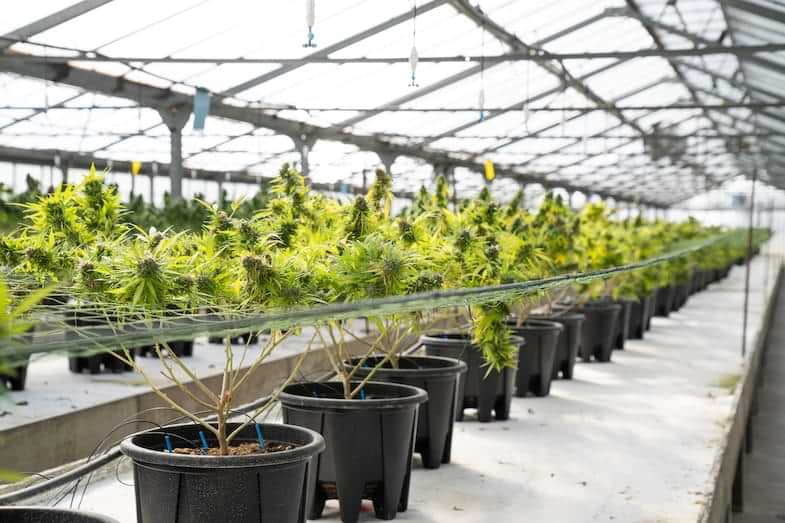

Choosing Your Cannabis Strains Wisely
Selecting the right cannabis strains is paramount for a successful SCROG grow. Sativas or sativa-dominant hybrids are the preferred choice for SCROG cultivation due to their easier growing experience and because they possess qualities that align well with the SCROG method, making them suitable for growing multiple plants in a single setup. Power Plant, a South African sativa strain recognized for its abundant yields and flexible growth pattern, and Desfrán, a sativa strain derived from the Latin American ‘Destroyer’ strain, are excellent choices for SCROG cultivation of marijuana plants.
When preparing for SCROG cultivation, it is important to look for strains with flexible branches, good internodal distances, and a moderate flowering stretch. These traits are optimal for SCROG because they allow the plant to be easily trained through the screen. Additionally, it’s important to take into account the THC levels and genetic background of the strain to ensure it aligns with your SCROG setup goals.
The Importance of Pot Selection
Selecting the appropriate pots is as important as choosing the right strains. Using plastic pots in SCROG cultivation has advantages such as being lightweight and easy to move, which allows for better control of plant placement. However, they provide less control over the growing medium, especially when compared to fabric pots that offer better aeration for the canopy. Fabric pots enhance plant growth by increasing the oxygen supply to the roots and enabling easier breathing. They also aid in root pruning, preventing plants from becoming rootbound as they reach the edge.
When selecting the appropriate pot size for SCROG cultivation, it is important to consider factors such as the size of the growing area, the number of plants being grown, and the specific strains used. For instance, when growing a single sativa strain in a 1x1m tent, it is recommended to use a pot with a capacity of 25-30 liters. For multiple smaller indica strains in a slightly larger tent, pots of 11-15 liters are advisable.
Creating the Perfect SCROG Setup
Crafting the ideal SCROG setup necessitates meticulous planning and is considered an art. Preliminary steps include:
- Ensuring there is sufficient space both horizontally and vertically in your grow setup.
- Making sure you have the appropriate power and type of grow light for SCROG before proceeding with the installation.
- Using a sturdy, rigid metal net with a grid size of around 5cm x 5cm. This type of net provides excellent support for the plants and helps optimize their growth.
- To attach ready-made SCROG nets, use clips or ties to secure them to the side poles of your grow tent. If using plastic garden fencing, it should be secured with cable ties.
It is essential to secure the screen firmly to ensure uniform growth of all plant branches, thereby creating an even canopy. The recommended height for placing the SCROG net is 20-30 cm above the top of the grow pots. This allows for sufficient space for plant growth and is typically about 30-45 cm below the grow light for optimal light exposure.
Read also: HHC banned in France: a new twist in cannabis regulation
Timing Your SCROG Grow
In SCROG cultivation, timing holds paramount importance. SCROG training should commence when the plants have developed at least 4-5 nodes, usually after a few weeks in the seedling stage. It is crucial to wait until this stage to guarantee that the plants are adequately established for training. The initial step to start training the plants in the SCROG method is to tuck the shoots under the screen as the plant begins to grow through it, typically when each tip grows about 5cm above the screen. This process lays the foundation of the SCROG process and directs branch growth.
When pinching out the tips of the main growing points to encourage lateral growth, it is important to avoid topping them too early, as this can lead to inhibited growth or plant death. Following the initial topping, the plant should be given a minimum of two weeks to recuperate before further training is carried out.
And when should you conclude scrogging and transition to the flowering phase? It is recommended to continue scrogging until the screen is about 75% full, which is the optimal point to initiate the CBD flower by flipping.
Training Techniques for Optimal SCROG Results
Training the plants is the essence of SCROG cultivation. Topping and branch manipulation are two of the main techniques used to create an even canopy and maximize light exposure. The former involves splitting a single cannabis stalk into two, creating more main stalks and flowering sites, while the latter involves weaving branches through the screen to promote horizontal growth.
Encouraging Lateral Growth Through Topping
Topping is an essential technique in SCROG cultivation. Sativas or sativa-dominant hybrids are the preferred choice for SCROG cultivation, making them suitable for growing multiple plants in a single setup, thanks to their flexible branches and moderate flowering stretch. Power Plant and Desfrán are excellent choices for SCROG cultivation of marijuana plants due to their abundant yields and flexible growth patterns.
When you top your plants, it is important not to do it too early as this can lead to inhibited growth or plant death. Following the initial topping, the plant should be given a minimum of two weeks to recuperate before further training is carried out. The optimal timing for topping cbd buds for SCROG cultivation is during the latter half of the vegetative stage. This timing allows for recovery and ensures robust lateral growth before the flowering phase begins.
Manipulating Branches for Even Canopy Formation
Branch manipulation, or weaving, plays a crucial role in SCROG. Weaving branches through the screen, also known as tucking, compels the stems and branches to grow horizontally instead of vertically, promoting an even canopy. It is recommended to weave the plants during the early flowering phase. Continue this process until the screen is completely filled. Additionally, secure the branches in place using soft garden ties to promote an even canopy.
When shoots emerge above the net, it is important to fix them into the mesh structure. This can be achieved by weaving them into place, carefully pushing the shoots under the next hole to create a dense, uniform plant carpet. Repositioning cannabis shoots without causing damage can be achieved through high-stress methods such as carefully squeezing and pinching the branches to bend them down, almost to the point of snapping, or by pulling them back through a section or tying them down in place.
Navigating the Vegetative and Flowering Stages in SCROG
Both the vegetative and flowering stages demand special attention in SCROG cultivation, a green method that many growers prefer. Extended periods of vegetative growth facilitate the development of a full and extensive canopy, particularly beneficial for growers with limited screen space or those cultivating stretchy sativa varieties. This approach focuses on horizontal expansion rather than vertical growth, making the most of the available space.
The flowering phase should be initiated when the screen is mostly filled, by reducing lighting from 18 hours to 12 hours, to encourage the plants to start blooming.
Maximizing Vegetative Growth
During the vegetative stage, light and nutrients are crucial for the plants’ growth. Light is necessary for photosynthesis, promoting sturdy and healthy plant growth. Higher light intensity can result in larger harvest sizes and increased cannabinoid concentrations. The recommended light schedule for SCROG cultivation during the vegetative growth stage is 18 hours of light and 6 hours of darkness.
Nutrients, particularly nitrogen, play a crucial role in supporting vegetative growth in SCROG cannabis cultivation. Phosphorus and potassium also have important roles, especially during the flowering stage. To prevent nutrient deficiencies, it is important to:
- Ensure a nutrient-dense medium
- Consider composting
- Introduce mycorrhizae to aid in nitrogen fixation
- Carefully monitor nutrient provision
Flushing the growing medium with pH-balanced water can help prevent salt buildup and maintain the optimal pH.
Inducing Flowering for Heavy Buds
Triggering flowering is a pivotal phase in SCROG cultivation. Adjusting the light schedule is crucial for inducing flowering in cannabis plants as it triggers them to start the flowering process, leading to faster harvests and improved bud quality. The recommended light schedule for triggering flowering in cannabis plants is a photoperiod of 12 hours of light followed by 12 hours of darkness.
Visible signs indicating that a cannabis plant has successfully entered the flowering stage include:
- Buds swelling
- Increased trichome production
- A strong smell
- Dark water turning lighter
- The plant getting fatter
- The emergence of white or pale-colored hairs (pistils) on the buds.
Advanced SCROG Strategies for Experienced Growers
For seasoned growers, implementing techniques such as super cropping and main-lining can significantly boost SCROG outcomes. Some benefits of super cropping include:
- Increased light penetration through the canopy
- Promotion of bigger yields
- Control of plant structure and shape
- Encouragement of more vigorous vegetative growth and better bud development.
Main-lining, on the other hand, entails sequentially topping and tying plants to create an evenly sized bud canopy.
Enhancing Light Penetration with Super Cropping
Super cropping is considered a high-stress training technique due to its process of bending and pinching branches to encourage better growth. This method can potentially increase yields and quality of the plant. This should be performed during the vegetative stage, before plants enter the screen. Super cropping in SCROG cultivation entails pinching and bending branches to damage the inner fibers while keeping the outer layer intact. This high-stress training method is known to enhance light penetration and boost yields.
Super cropping improves light penetration in cannabis plants by bending the stems to grow parallel to the ground, which enables more light to reach lower parts of the plant.
Streamlining Nutrient Flow with Main-Lining
Main-lining is a training technique employed in cannabis cultivation to promote the growth of multiple large, uniform branches in the plant. Main-lining in SCROG cultivation impacts nutrient flow by splitting the cannabis stem and creating a Y-shaped hub, which diverts nutrients and resources to the main colas, resulting in even growth and larger buds.
Main-lining creates a symmetrical canopy by employing the tie-down method and topping to guarantee that every branch originates from the main stem and is consistently adjusted for symmetry. The main-lining process for cannabis plants involves a series of steps including splitting the stem to create a Y-shaped hub, preparing pots, topping the plant multiple times, and training the branches to divert nutrients and resources. This technique offers several benefits, including increased canopy size, easy implementation, greater control over stretching, and the ability to produce only fat colas and no tiny ‘popcorn’ buds, resulting in a more uniform canopy.
Cultivating Multiple Plants in a Single SCROG System
For many growers aiming to maximize yield, cultivating different plants in a single SCROG system can prove beneficial. To grow multiple plants effectively, a few plants, specifically four small to medium-sized plants, are considered the optimal number per square meter for SCROG. This allocation provides each plant with sufficient space for growth, while also aiding in mold prevention and maximizing yield. So, how many plants should you grow? Stick to this recommendation for the best results.
Maintaining proper spacing in a SCROG system is essential to reduce mold growth and promote optimal yield. This is accomplished by maximizing the number of plants while ensuring they have adequate space for light exposure and airflow, ultimately leading to a healthier and more productive growing environment.
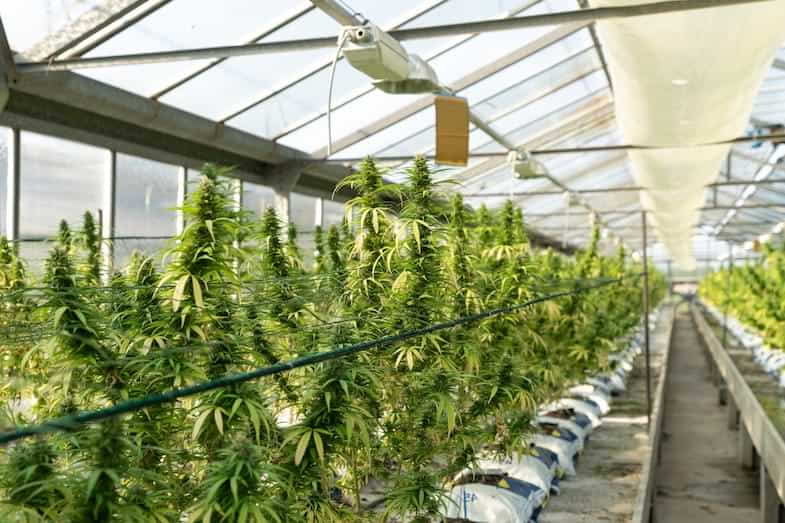

Maintaining Your SCROG Garden
A well-maintained SCROG garden necessitates a robust ventilation system featuring at least one inline fan complemented by several strategically located oscillating fans. It’s important to keep the fans at a good distance to avoid wind stress. This setup is crucial to prevent humidity build-up and the growth of pests and pathogens.
Leaf trimming in a SCROG setup is crucial for increasing light exposure to more bloom points, ultimately resulting in higher yields. However, it is a controversial practice because some growers argue that leaves serve essential functions and removing them could be harmful. On the other hand, SCROG growers believe that strategic leaf removal can be advantageous for maximizing light exposure to bloom points.
Lollipopping, which involves removing all foliage from the bottom of the plants, leaving big buds at the top, is recommended near the end of the vegetative phase and again a few weeks into flowering after identifying which sites to focus on. Pruning leaves is also important to ensure light penetrates through to reach lower branches that are still growing towards the screen, supporting an even canopy and optimal light distribution.
The Pros and Cons of SCROG Cultivation
Just like any cultivation technique, the SCROG method comes with its own set of advantages and challenges. The main advantages of employing this method in cannabis cultivation include increased yields and more efficient use of space. However, some of the challenges include the labor-intensive process of weaving and binding plants to the netting or screen, challenges in relocating plants due to the net, and the necessity for careful planning and investment, making it more suitable for experienced growers.
Despite these challenges, the effort is worth it. Plants grown using the SCROG method require daily attention to ensure the branches are carefully positioned and to maintain an equidistant canopy from the light source. But with time and practice, you’ll find that the rewards far outweigh the challenges.
Frequently Asked Questions
What does screen of green mean?
Screen of Green, or SCROG, is a productive method for growing cannabis plants, which involves training the plants through a horizontal screen to encourage bud formation along the branch stems.
What is the difference between screen of green and sea of green?
Screen of Green (SCROG) focuses on producing multiple bud sites using a lower number of plants with long vegetative growth, while Sea of Green (SOG) forces the plant’s energy into one main cola using high numbers of plants with minimal veg time. Ultimately, SCROG creates a flat canopy of blooms, while SOG maximizes speed and is useful in constrained spaces.
When should I ScrOG my plants?
You should start to ScrOG your plants as soon as they start making contact with the screen, typically positioning it around 20cm above the base of your plants. Their rate of growth will determine the exact timing.
What does SOG mean in growing?
SOG in growing stands for Sea of Green, a technique that maximizes growing space by using many small pots to cover the entire available area. This method allows for efficient use of space and resources, maximizing the yield.
What is the purpose of the SCROG method?
The purpose of the SCROG method is to promote horizontal growth in cannabis plants, leading to an even canopy, optimal light exposure, and higher yields.
Conclusions
In this article, we have seen what the ScrOG cultivation technique consists of and why it is considered most effective by many legal marijuana growers.
So if you are looking for quality and safe products, you need to visit Justbob, the leading CBD shop. Here you can find the best legal hash and the most popular CBD oil on the market.
We are waiting for you on JustBob!
Key Takeaways for cannabis plant
- The Screen of Green (SCROG) technique enhances cannabis plant yields by training plants to grow horizontally through a screen for even light distribution, which is effective irrespective of plant numbers and is suited for both new and professional growers.
- Successful SCROG cultivation is dependent on selecting the right strain and pot, training the plants using techniques like topping and weaving, and diligently monitoring the vegetative and flowering stages with proper lighting and nutrient management.
- Advanced SCROG strategies like super cropping and main-lining can increase yields and improve canopy management, but these require experience and precision, while SCROG also faces challenges such as being labor-intensive and less mobile post-setup.


